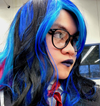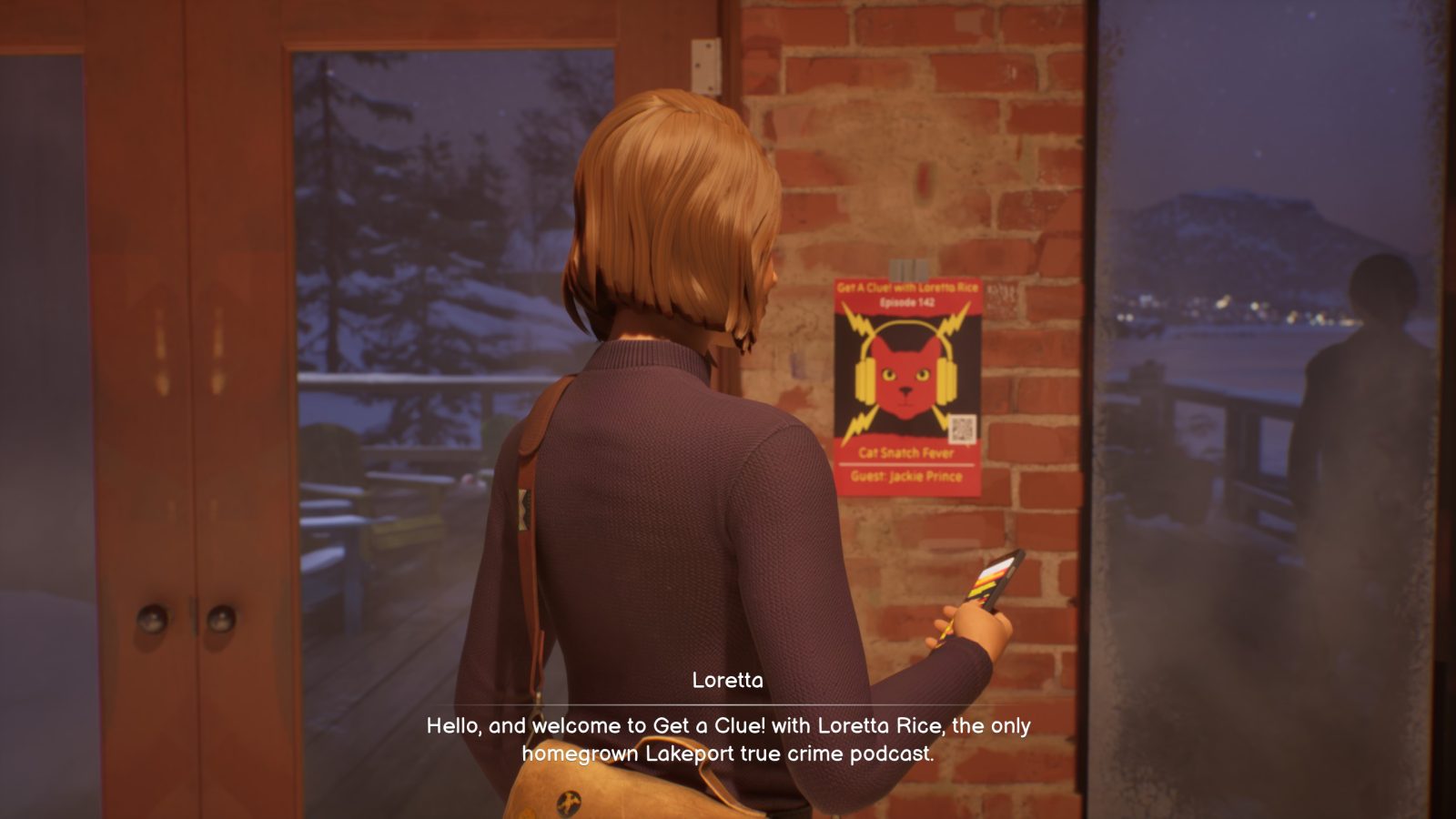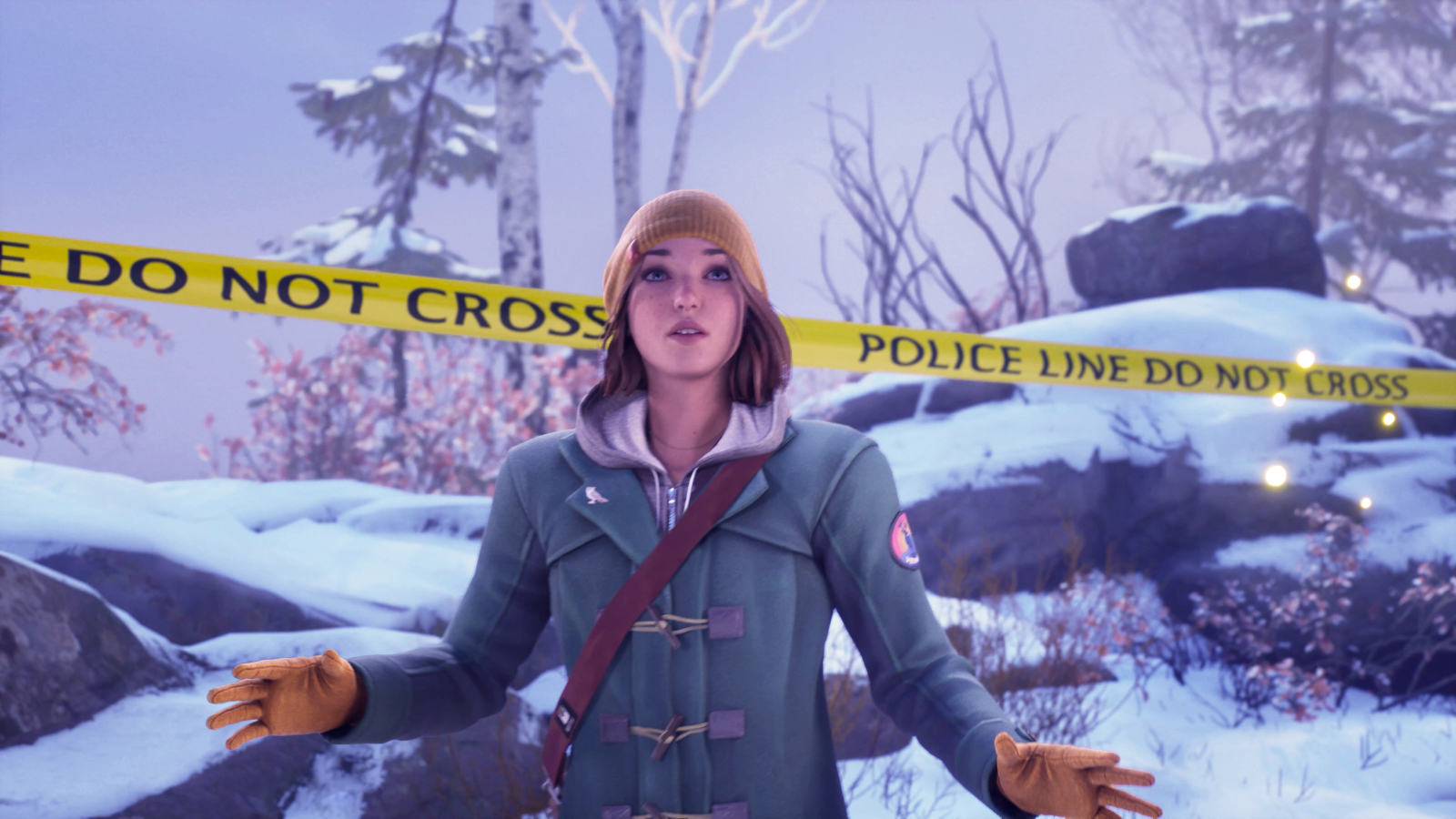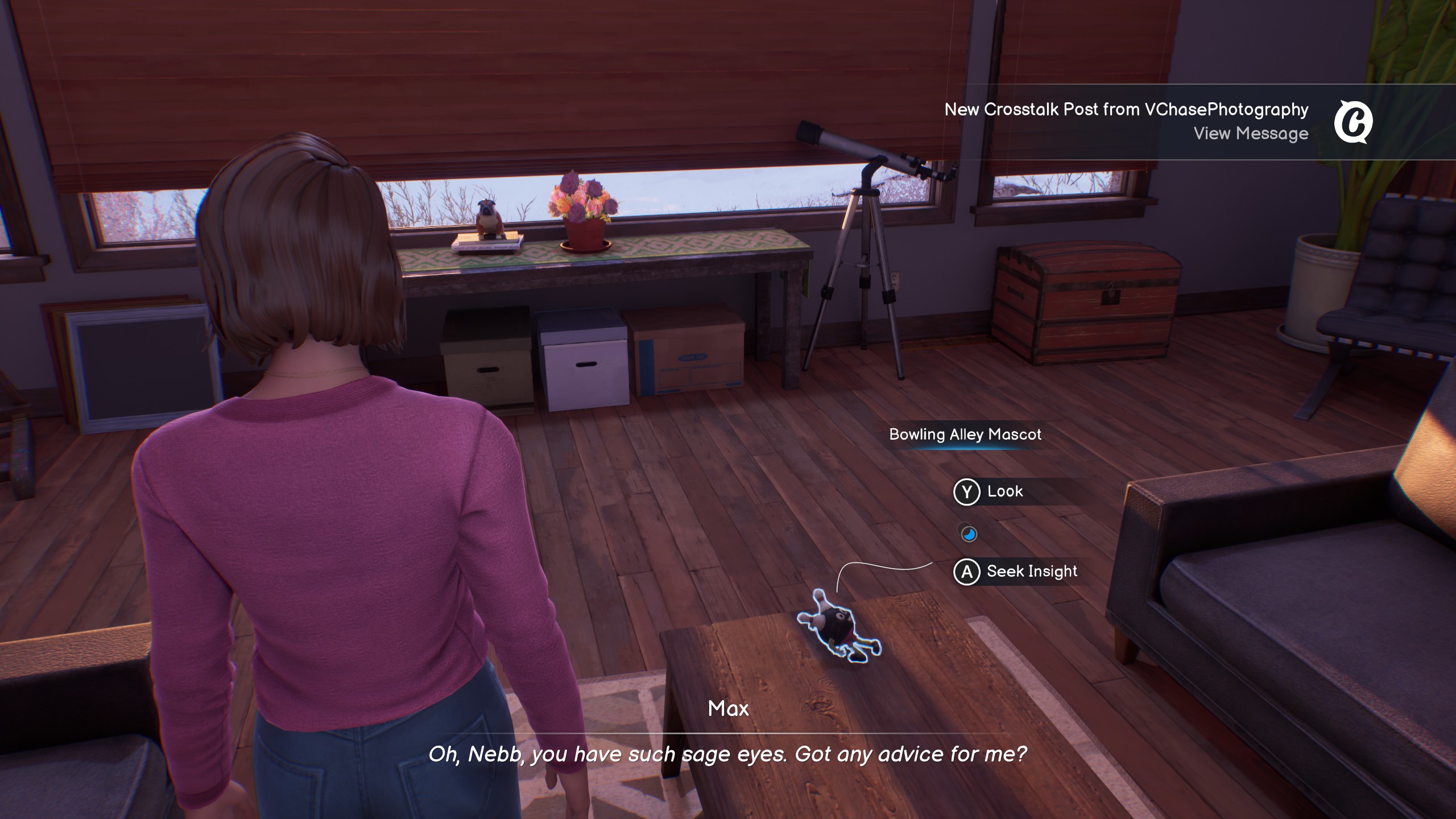
“This action will have consequences.” This is the narrative framework that every Life Is Strange game is built upon. Actions and choices that will alter character dynamics and how events will play out through each standalone entry’s overarching narrative. With the announcement that Life Is Strange: Double Exposure would be a direct sequel to the first game, I was perplexed and skeptical to say the least.
How would developer Deck Nine continue a story that ended with protagonist Max Caulfield making a climactic final choice leading to two drastically different outcomes? Why does Max have time powers again, albeit different ones, when the first game hammered home the theme that we must live with our choices? Framing a direct sequel this way seemed antithetical to both its message, and the series’ “this action will have consequences” hook. Yet upon starting, my greatest fears became Double Exposure’s greatest achievement. At its best, and fortunately most prominent, this direct sequel offers a heartfelt examination on grief and guilt, honoring the first game’s two endings by exploring these emotional repercussions of Max’s impossible choice.
Unfortunately the rest of the game is a mix of clashing highs and lows that hold the overall package back from greatness. At its center is a captivating murder mystery hook that doesn’t evolve much gameplay or narrative-wise outside its initial intrigue. A cast of fleshed-out characters with messy relationships that don’t have a compelling enough plot to capitalize on their depth. Strong visual and auditory presentation is blemished by technical issues. And a baffling post-credit scene that immediately brought back my pessimism for the future of the series. On the whole, it is remarkable how Life Is Strange: Double Exposure managed to push aside my skepticism to be a game that I liked. I just wish it was one I was able to love.
The biggest gamble of Double Exposure is having Max back in the saddle as this title’s lead. Bringing back a beloved character after their story had not just one, but two separate conclusions dictated by player choice was a hurdle I thought would be near impossible to clear. However, to my surprise, Deck Nine not only managed to integrate both endings in a way that sustains its gut-wrenching impact, but retroactively makes the first Life Is Strange better. If that game’s final choice was the action, then the entirety of Double Exposure is the consequence explored in greater depth than what its predecessor’s final cutscenes had to offer.
Set years after the first game, Double Exposure starts with catching up to where Max is at her current stage in life: a young adult studying/teaching at Caledon University to pursue a photography career. However, this Max is slightly different from the one at the end of the first game, having time to let the traumatic events of Arcadia Bay and the impossible final decision fester in her mind from her teens to adulthood. This is how Double Exposure gets to have its cake and eat it too, smartly consolidating the two drastically different endings by exploring the common emotional response she would have no matter what choice she made. Loneliness is a concept hammered repeatedly at the start, which is the byproduct of Max’s grief and guilt she’s carried for years. The player can decide which ending they chose near the start of the game, which affects things as small as the flavor text found in her journal or phone contacts, to dialogue in some scenes being entirely different thanks to the differing background context. But the broad strokes of how Max is characterized remain the same. It is a clever method Double Exposure employs to consolidate the commonalities of its predecessor’s two distinct conclusions, all while using it as a springboard to focus on Max’s arc in this game.
Her regret is expertly shown with only occasional usage of direct exposition, instead relying on the subtext on Max’s actions both when she’s interacting with others or by herself. While her growth to adulthood has made her more comfortable expressing herself to others, Max’s relationships with her peers at Caledon paints a different picture. She’s friendly and polite to those around her, but actively avoids opening up to others or even calling them friends. The exception is her friend Safi, who actively tries to push Max out of her shell, a glimmer of color in the photographer’s world of black and white. Which makes it all the more tragic for Max when the corpse of Safi is found with a gunshot wound after a winter night spent enjoying themselves, resurfacing old wounds as Max dives head first in solving the mystery of her friend’s death.
Fans of the first Life Is Strange may notice how the premise shares similarities to that title. The parallels don’t end there, as numerous events and character dynamics correlate to, remixed from, or even cleverly inverted from those in Arcadia Bay. Rehashing what came before is normally something I’m hesitant about for sequels, as it risks repeating the same story that came before instead using it to forge something new. I am pleased that Double Exposure takes the latter path, as it integrates its rehashed conflicts to its advantage. I adore how these scenarios served as a progress meter for Max’s arc, examining how she responds to these similar beats with both a mature outlook, and a helping of self-blame. Feeling guilty for past actions, as the past repeats itself.
Sadly, this is where the aspect I’m most conflicted about rears its head, with mixed execution affecting not just Max’s character, but the narrative and gameplay as well. This being the return of time-based powers. While Max is unable to rewind time like her high school days, she gains a new ability to Shift between the timeline where Safi was killed, and one where she is alive. Messing with time again as a premise seems to fly in the face of the message of the first Life Is Strange, even with the considerable effort made to justify it. There is a decent distinction pointed out about how time still progresses when Shifting, and a grander point about how regret causes people to relapse on the growth they want to achieve. I just felt these points weren’t emphasized strongly enough compared to the spectacle of her powers. While I was able to tolerate it enough to not let it compromise my adoration of Max’s character work, mileage may vary for others.
All of this is made especially egregious when the latter half progressively leans harder into the focus on her powers, While there are admittedly some fantastic moments that serve as a culmination of Max’s character between both games, the final chapter in particular leans way too hard on style over substance sequences with the powers, rather than tying things together in a cohesive manner. The actual bullet points of what it covers in Max’s arc is fantastic, but therein lies the problem: it speed runs through fantastic bullet points, instead of taking the time to fully flesh out its strong ideas.
Strong ideas with just mixed execution is the best way to describe my thoughts on how Shifting is integrated into the typical adventure gameplay. A significant chunk of time is dedicated to exploring the campus of Caledon, gathering clues and talking to various students and faculty to gain more information. Switching timelines at designated Shift spots serves as a way to expand how each objective can be approached. For example, one section requires getting into a locked briefcase. However, only one timeline has a key to unlock the case, while the other has the owner sitting in the vicinity of it. Since Max can take objects between timelines, she has to find a way to snatch the key from the owner in one world, and use it to open the case in the other.
While playing through these sections always remains fun, most of the puzzles boil down to finding an object in one world and taking it to the other to achieve the unlock condition. There is even a hint system where Max will point out the next task that needs to be done to progress. Fortunately the frequency can be altered in the menu. Additionally, one of Max’s other abilities called Pulse is severely underutilized. It allows her to get a glimpse at events occurring in the opposite timeline without needing to Shift. Unfortunately the radius is so small that I found it quicker to just swap timelines if I needed to find what I was looking for. That’s not to say there aren’t any standout moments using these mechanics. A stealth section in the early game, and another near the end involving a projector are excellent sequences that highlight what these powers can bring to the table. I just wish these weren’t the exception to the norm.
However, by the end of the game, there is a struggle to keep the two timelines relevant from a gameplay standpoint. Since there’s more going on there, later episodes mostly take place in the Living timeline, with Max returning to Dead World only for collectibles and puzzle solving. There are some interesting ways these two timelines interact, especially early on, but it does feel a bit abandoned as the story reaches its final act.
Continuing the trend of strong setup with inconsistent payoff because of the powers is the character writing. On the whole, I really dug this cast of characters. Guilt also serves as a thematic throughline of the supporting cast’s characterization. Most of them are haunted by choices they made in the past, their regret serving as a driving force for their actions in the present as Safi’s death exacerbates these feelings. This is the highlight of Double Exposure’s character writing: tender and grounded scenes depicting three-dimensional characters trying to live with the consequences of their past regrets, with Max approaching these familiar situations with maturity and jaded baggage. It also helps that the writing is far sharper than the first, managing to balance the youthful quirks from its predecessor while being more mellow. Furthermore, Shifting timelines allows Max to see the different sides of the other students and staff without the shock of Safi’s death looming over them. It is the basis of the sub-mysteries that intersect to paint the bigger picture of Safi’s murder.
Which makes it a letdown how the narrative doesn’t capitalize much on this fantastic foundation. Once again, the final few chapters feel rushed because the narrative jumps the gun to prioritize the supernatural, leaving the resolution to character storylines fighting for screen time. With a murder mystery built upon its character-driven elements, laying all the cards out too early leaves what should be satisfying revelations and confrontations falling a bit flat. Plenty of their growth boils down to a character having a problem, Max solves the problem on the side without much room to explore how these characters get from point A to B in their arcs. As a result Double Exposure has a bizarre problem of having a fleshed-out cast filled with depth, but fumbles in using the story to push them in compelling directions. It ends right when it starts to hit its stride. One character in particular has the worst of it, completely disappearing from the plot while rarely being brought up by the other cast members ever again.
Circling back to the gameplay, Life Is Strange: Double Exposure continues the series’ staple of having minor to major choices that affect the protagonist’s relationship with other characters, and how future events play out. Despite gushing about how this game emphasizes the consequences of the first entry’s final decision, the actual choices in this game leave a lot to be desired. Admittedly the first game also stumbled with creating player decisions that meaningfully alter the way the story plays out, but this storytelling device feels more inconsequential than ever in Double Exposure. Some neat side storylines can be missed by not exploring the campus, but plenty of the major decisions only impact certain the tone of conversations Max has with respective characters, and the oddly specific details of their employment status.
On the whole, a good chunk of the critical choices makes sure that either action Max performs remains in character for her. But there are a few questionable decisions that can be made that seem wildly out of character. An example of this is the game trying to do a romance element. Max can become involved with two different characters, each in one of the timelines. The consequences of romancing one or both of them do come up right at the end of the game, but in a very confusing way. It’s hard to describe without spoiling anything, but it felt like the writers were trying to write off any romantic feelings Max had in this game to preserve the possibility of romance in future titles. While this game’s narrative is by no means self-contained, it feels like it’s kind of going in the face of some of the lessons Max had to learn here. There is still a level of amusement seeing how your choices compare to other players at the end of each chapter, it just overall lacks consistency for the main heroine.
This is on top of having one of the worst post-credit scenes I’ve ever seen. I sat in front of my TV dumbfounded at the blatant sequel bait on display, pushing the series in a direction I could not be less enthused about. It gave a sour aftertaste on what was a solid conclusion to Max’s arc. I’ll always prefer a story making bold choices to say something, rather than covering its butt for a potential sequel. Despite these shortcomings, Double Exposure is still solid. It somehow pulls off being a direct sequel while also distinctly trying its own thing. Sure it’s messy and a bit rushed, but there is a strong story that shines through with lovable characters, and the two timelines mechanic that is simple but fun to play around with. And of course, Max’s arc remains a highlight even when fluctuating between the highs and lows in the latter half.
Visually speaking, this latest entry is absolutely gorgeous, and easily the best the series has ever looked. Life Is Strange has always excelled at conveying a quiet, reflexive nostalgia with visually absorbing scenery, and Double Exposure is no exception. Strolling through Caledon’s campus means taking in the serene winter vibes, seeing the various things the students have built in the snow, or a student who is always ice skating on a pond. This is juxtaposed by the interiors of the school, with each room being decorated with projects and awards from students and staff. The work being done while in school, versus the play when enjoying the winter snow. Yet the visual still manages to blend these two primary atmospheres, primarily with the holiday decorations in the buildings, and the students enjoying warm beverages to warm up after trekking through the blanket of snow.
A cool detail is how the primary color motif of the world changes depending on which timeline Max is currently occupying. A cold blue for when Safi is dead, putting the whole school in a somber, reflective state of mind. In the timeline where Safi is alive, the lighting shines bright with a warm yellow, as the cast is blissfully unaware of the tragic shift in status quo across timelines. The PS5 version in particular has a neat detail where the lights on the DualSense controller changes depending on which timeline Max currently inhabits.
What I found the most impressive about the visuals is the animation for the characters. In addition to voicing the characters, the actors also performed the motion and facial capture for their respective characters, making every movement aligned to the strong voice acting being performed. Double Exposure has outstanding facial animation, capturing even the most rapid, subtle expressions to bring these characters to life. It is a vast improvement over the animations in Max’s first outing, where characters speaking often looked robotic due to the stiff jaw movements as well as blank, thousand-yard stares.
With that being said, there are some technical issues to contend with. While Double Exposure on an RTX 4070 with settings Max(Caufield)ed out looks gorgeous, and runs fantastic most of the time, I experienced some noticeable frame dips in certain areas such as the Fine Arts Building. As I got further into the game, I also started experiencing some lighting glitches, where shadows would begin flashing or a fireplace’s light would rapidly flicker through walls. These examples were especially distracting, as they occurred during significant story moments. This is pre-release code though, so hopefully Deck Nine can shore things up before launch.
Regrettably the PS5 version not only suffers from similar bugs as the PC version, there are several technical issues prominent on Sony’s system that kept rearing its ugly head. Transitioning from cutscene to gameplay often has characters disappearing for a brief second to snap into place to where they should be standing, where I occasionally caught them T posing before loading back in. One character model during an objective in a later mission straight up had no collision on his model, allowing Max to walk through them. Then there were the few crashes I had during my 15-hour playtime, causing me to have to redo a few small sections again because the autosave primarily kicks in when loading into a new area.
But the worst bug I encountered on PS5 is related to the audio. Sometimes, every source of sound outside the music will completely be muted. Various methods I initially attempted failed to fix the issue. These ranged from reloading the most recent checkpoint, going back to the main menu and back in the game, restarting the application, to even restarting my PS5. The solution was enter another area to trigger a new autosave, which brings back the rest of the audio. I am glad that the fix to this glitch is simple to execute, but it is still baffling how not even restarting the system or game could solve it.
As for the soundtrack, it is stellar across the board. While none of the tracks outside the menu music stuck out to me, I remember the pockets of moments they were utilized in. Despite investigating a murder, there is a soothing ambiance in the tracks. The melancholic, yet nostalgic strums of a guitar. The soft, lonely keys of a piano. Throughout each chapter, there are optional spots where Max can sit down and reflect on everything that came before, and what’s yet to come. The backing vocal tracks ground the mood she feels at that given time, lost in her own thoughts. It gives warmth as she catches her breath, while also being an ever-present reminder of the cold snow that housed the corpse of her friend.
While Double Exposure has a fantastic wealth of accessibility options, such as trigger warnings for things like transphobia, there’s one that feels like it’s missing: removing the tinnitus sounds that occur when near a Shift Point. It’s not particularly helpful since Shift Points all have a distinct visual effect, which you can make even more obvious with Pulse, and it gets really grating after a while since there are usually a lot of interactable objects within range of the noise.
I’ve been pretty harsh during a decent chunk of this review, but I want to make one thing clear. In the end, I still like Life Is Strange: Double Exposure. Quite a bit actually, which is a pleasant shift from my initial pessimism. I just wanted to love it. It is frustrating how so many of the outstanding components I gushed about are held back by the aspects of the endgame I’m conflicted about. Hence the missed potential of both gameplay and story become glaring in hindsight. It drags what could have been an amazing game into one that’s just good.
Life is Strange: Double Explosure
Good
When Life Is Strange: Double Exposure focuses on telling a personal story about trauma and regret it soars. When it focuses on being a teaser for future entries with its supernatural spectacle, it unravels. This balancing act unfortunately causes the latter to cannibalize some strengths from the former. Still, Max’s characterization and emotional journey remain the prominent highlight, offering a heartfelt and bittersweet thematic throughline at how the wounds of past guilt and grief scab over time. For the game to win me over despite my initial skepticism, that’s a pretty strong achievement, flaws and all.
Pros
- Max's return explores the first game's emotional consequences
- Fleshed-out cast with strong thematic parallels
- Fantastic set up filled with mystery and intrigue
- Shifting offer a fun spin to the investigation gameplay
- Beautiful and atmospheric visuals and music
Cons
- Rushed final chapters that prioritize spectacle over character
- Shifting is fun, but lacks varied puzzles
- Graphical and audio technical issues
- Abysmal post-credits scene














